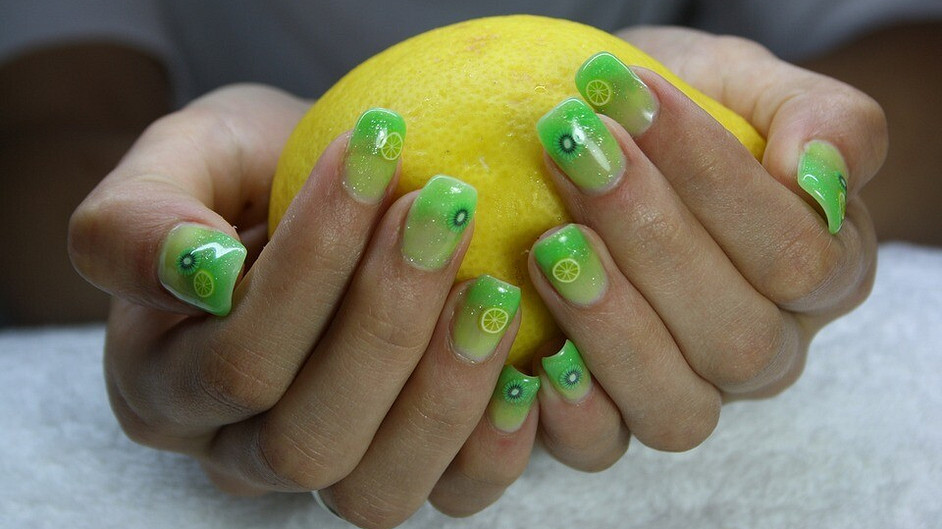
What is acrygel how to apply, how to remove, advantages and disadvantages
Acrigel: a new word in nail extension. Using acrigel, you can not only extend, strengthen and model artificial nails, but also create an unusual design on them.
Nails modeled with acrigel look natural and are barely noticeable on the nails thanks to the thin and light material.
Don't miss
- Don't miss Be your own master: how to strengthen your nails with acrylic powder
What is acrigel
Acrigel has the following properties:
- Sawdust density. Due to the fact that the dust that forms during filing of acrylic is significantly heavier than the dust of classic gels and acrylic powders, it does not fly through the air, but immediately falls on the table. This property of acrygel makes this material safer for both the master and the client, significantly reducing the risk of allergic reactions and various respiratory diseases. Although the use of protective equipment, such as glasses, a mask and a dust collection apparatus, is still necessary during the extension procedure;
- The absence of toxic fumes during polymerization in a UV lamp or LED lamp. This method of extension can be used even by asthmatics and allergy sufferers;
- Acrygel does not spread, unlike gel polishes, so the risk of skin contact with the solution is minimal;
- Simplicity and ease of application. Unlike acrylic powders, acrygel does not harden without drying under a UV lamp, which greatly simplifies working with it, so even novice craftsmen can easily master the technique of working with polygel.
The color range of acrygel is not is very rich, so if a specific shade is required, it can be achieved by applying gel polish on top of the acrigel.
Procedure for applying acrigel
The procedure for acrygel nail extension consists of several stages:
- first, a manicure is performed in the usual way;
- further, before starting work with acrylic, a brush with artificial or mixed with natural bristles is moistened in a cleanser (degreaser);
- the nail plate is also treated degreaser, and then coated with primer in one layer;
- a base coat is applied and the mold is attached;
- using a brush, a small amount of acrygel is evenly applied to the plate;
- then the brush is moistened in a special solution, which will not allow it to stick to the acrygel (during the work, the brush must be moistened in a degreaser);
- the desired shape of the nail is created, the area near the cuticle is especially carefully worked out in order to avoid peeling of the artificial nail ;
- after completion of the work, the nail is dried in a UV lamp;
- using a special file, the surface of the nail is polished and given its final shape.
How remove acrylic nails
Below is a small instruction on how to remove acrylic nails at home:
- cut off the elongated shapes;
- apply cotton pads soaked in a special liquid (solvent for acrylic nails) over nails;
- wrap each nail in foil for 15-20 minutes;
- remove the foil one by one, removing the coating with orange sticks;
- polish the nails with a buff;
- apply strengthening enamel;
- moisturize your hands and nails with oil or cream.
However, it is better to resort to this method in extreme cases, and remove the acrylic in specialized salons, in the same place where it was applied.
Don’t miss
- Don’t miss The harm of gel polish for nails: scientific research and 8 ways to make the procedure safe
Pros and cons of acrigel
Acrigel has many advantages:
- hypoallergenic formula, does not cause discomfort or burning;
- health safety. Acrigel can be used even during pregnancy and lactation;
- Economical in use (only one layer of acrigel is enough to achieve an ideal result) and quick to complete the work;
- Easy to use;
- non-toxic.
Among the disadvantages of acrygel — its rather high cost (especially compared to acrylic powder), as well as the considerable price of associated consumables.
Contrary to the assurances of acrylic manufacturers, it does not treat natural nails.
So speaking about the real benefits of this product, we can say that in reality acrygel only protects the nail from mechanical damage and the harmful effects of chemicals that we encounter every day.
Also, You must remember that wearing artificial nails all the time is harmful. Even though the material is completely safe, natural nails need to breathe and rest. It’s better to strengthen and treat them with vitamins and a healthy diet in general.

